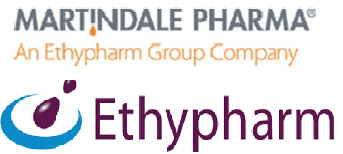Contraindicated combinations:
Indirect sympathomimetic agents (phenylpropanolamine, pseudoephedrine, phenylephrine, methylphenidate)
Risk of vasoconstriction and/or of acute episodes of hypertension.
Alpha sympathomimetics (oral and/or nasal route of administration)
Risk of vasoconstriction and/or episodes of hypertension.
Non-selective MAO inhibitors
Paroxysmal hypertension, hyperthermia possibly fatal.
Combinations not recommended:
Ergot alkaloids (dopaminergic action)
Risk of vasoconstriction and/or episodes of hypertension.
Ergot alkaloids (vasoconstrictors)
Risk of vasoconstriction and/or episodes of hypertension.
Selective MAO-A inhibitors (administered concomitantly or within the last 2 weeks)
Risk of vasoconstriction and/or episodes of hypertension.
Linezolid
Risk of vasoconstriction and/or episodes of hypertension
Tricyclic antidepressants (e.g. imipramine)
Paroxysmal hypertension with possibility of arrhythmias (inhibition of adrenaline or noradrenaline entry in sympathetic fibres).
Noradrenergic-serotoninergic antidepressants (minalcipran, venlafaxine)
Paroxysmal hypertension with possibility of arrhythmias (inhibition of adrenaline or noradrenaline entry in sympathetic fibres).
Guanethidine and related products
Substantial increase in blood pressure (hyper reactivity linked to the reduction in sympathetic tone and/or to the inhibition of adrenaline or noradrenaline entry in sympathetic fibres).
If the combination cannot be avoided, use with caution lower doses of sympathomimetic agents.
Sibutramine
Paroxysmal hypertension with possibility of arrhythmia (inhibition of adrenaline or noradrenaline entry in sympathetic fibres).
Halogenated volatile anaesthetics
Risk of perioperative hypertensive crisis and serious ventricular arrhythmias.
Combinations requiring precautions for use:
Theophylline
Concomitant administration of ephedrine and theophylline may result in insomnia, nervousness and gastrointestinal complaints.
Corticosteroids
Ephedrine has been shown to increase the clearance of dexamethasone.
Antiepileptics: increased plasma concentration of phenytoin and possibly of phenobarbitone and primidone.
Doxapram: risk of hypertension.
Oxytocin: hypertension with vasoconstrictor sympathomimetics.
Hypotensive agents: reserpine and methyldopa may reduce the vasopressor action of ephedrine.



